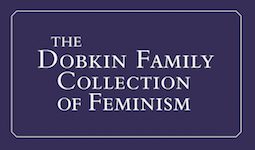LETTER: Typed letter signed to William Van Benthuysen, March 4, 1901.
Anthony to New York World editor W. Van Benthuysen:
“The day must be approaching when the whole world will recognize
woman as the equal of man”
Anthony, Susan B. Typed Letter Signed “Susan B. Anthony” to “Mr. W[illiam] Van Benthuysen.” 17 Madison St., Rochester, New York, 03/04/1901; one 8 ½ x 11-inch leaf “National-American Woman Suffrage Association” stationery; creased where folded from mail; minor edgewear and small closed tears at folds.
Anthony writes William Van Benthuysen, an editor at The New York World, following Van Benthuysen’s well-wishes for Anthony’s 81st birthday. She replies, “I hope I shall have just so many and no more years as my work can be of the useful kind.”
On the World and the woman’s movement, Anthony continues,
“I do not see The World regularly so do not know how much you are doing for the women’s cause, but I hope a great deal. The day must be approaching when the whole world will recognize woman as the equal of man in all the rights and privileges that belong to the citizen. Is it not a little queer that we spread our philactries [sic] over the ocean to Hawaii, Puerto Rico and the Philippines to clothe everyone wearing the form of manhood with the rights of citizenship while we withhold them from intelligent, cultivated, tax-paying women of the United States?” It is enough to drive the whole sex mad, but there is only one Mrs. Nation, and she flourishes her hatchet to good effect…”
Carrie Nation, the temperance movement advocate who would enter alcohol-serving bars with a hatchet, was leading raids, or “hatchetations” as she called them, through the American South at the time of Anthony’s letter. On Nation, Anthony ends her letter: “I do not believe that the hatchet is the weapon of civilization, but the ballot is, and I, therefore, ask for the ballot.”
The New York World, published from 1860 to 1931, was respected by Anthony and other leaders of the suffrage movement not necessarily for its publishing of pro-movement pieces, but rather for covering the movement at all. Anthony would republish many of its pieces in her women’s rights journal The Revolution; Lucy Stone would also frequently publish World stories in her publication, The Women’s Journal.
The World was also a progressive publication in hiring female reporters and editors long before other national papers followed suit. At the turn of the century, it started a “Women’s Section” that, under the editorship of Harriet Hubbard Ayer, would tap “into feminine desires that were far more than just health and beauty, but also dreams of transformation and social advancement” (Weisberger, Bernard A. Notable American Women. Vol. 1. 73).
(#4653394)
Print Inquire

